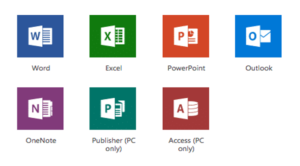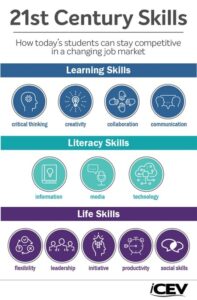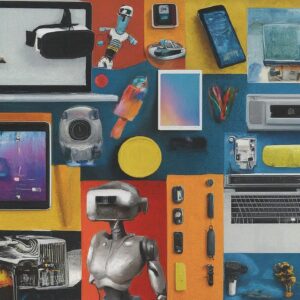 The lesson presented in the 5th class was an important one that focused on various application programs that can be used in today’s digital world. Ayushi, Gagan, and Mohammad did an excellent presentation on productivity suites, and presentation tools. The presenters elaborated much on the importance of these tools and how they become essential parts of our lives. In one of the resources shared by the presenters, productivity suites were described as a suite of tools designed to streamline tasks and boost output, including applications for creating documents, databases, graphs, spreadsheets, and presentations. While its core focus is on enhancing efficiency, the term is often expanded to include any software used in our personal and professional lives to assist us in communicating, collaborating, planning, and getting work done. According to the presenters and other existing literature, productivity suites play a pivotal role in enhancing digital literacy and 21st-century skills among students, equipping them for future workforce demands. Voogt and Roblin (2010) described 21st century skills “as an overarching concept for the knowledge, skills, and dispositions citizens need to be able to contribute to the knowledge society” (p. 1).
The lesson presented in the 5th class was an important one that focused on various application programs that can be used in today’s digital world. Ayushi, Gagan, and Mohammad did an excellent presentation on productivity suites, and presentation tools. The presenters elaborated much on the importance of these tools and how they become essential parts of our lives. In one of the resources shared by the presenters, productivity suites were described as a suite of tools designed to streamline tasks and boost output, including applications for creating documents, databases, graphs, spreadsheets, and presentations. While its core focus is on enhancing efficiency, the term is often expanded to include any software used in our personal and professional lives to assist us in communicating, collaborating, planning, and getting work done. According to the presenters and other existing literature, productivity suites play a pivotal role in enhancing digital literacy and 21st-century skills among students, equipping them for future workforce demands. Voogt and Roblin (2010) described 21st century skills “as an overarching concept for the knowledge, skills, and dispositions citizens need to be able to contribute to the knowledge society” (p. 1).

https://www.icevonline.com/blog/what-are-21st-century-skills
Reflecting on my experience in the use of productivity tools and softwares like Canvas, PowerPoint, Prezi, Animoto, Google documents, and Microsoft Office, and looking at the list of these skills as outlined in the figure below, I can say that indeed using these tools has in one way or another helped me develop essential competencies that are vital in today’s interconnected world. As an educator, I think integrating productivity suites into learning not only facilitates academic growth but also prepares students for real-world challenges. We live in a world where technology has enabled students to become active participants and creators in classrooms. Using productivity suites like word documents PowerPoint, even AI embedded platforms like Dale, and so on is empowering students to become active creators, which in turn helps develop their digital literacy. As an educator, I have seen students work together on projects and assignments, communicate and collaborate through sending of emails or sharing of documents. All these are characteristics of 21st century skills, and the only way they were able to exhibit this was through the use of these Microsoft tools. There are also some hands on activities and online platforms that have been tailored for young children to learn so as to establish a foundation for developing their digital skills. Due to the technology-driven environment we find ourselves in, it has become essential that every individual be digitally literate, and this is very essential in addition to the 21st century skills. So even people don’t want to embed themselves in the world of technology; it seems most employers now look for people that can solve problems using basic Microsoft Office programs, which I think can only be developed through productivity suites.
Looking at the gaps they leave, Orta (2019) identified substantial disparities in digital skills among students from diverse socioeconomic backgrounds, emphasizing the importance of equitable access to technology and effective digital teaching methods.In addition, Ramamonjisoa (2024) argued that the use of productivity suites may not fully address the complexities of social-emotional learning and global citizenship, which are vital for the holistic development of students.



